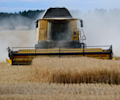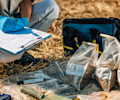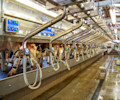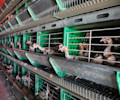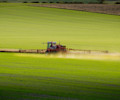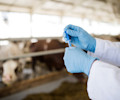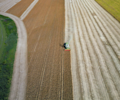A groundbreaking report
To coincide with the launch of the initiative, we released the FAIRR investment risk report, the first piece of research to look at the industrial livestock industry through a lens of investment risk. The report found that the industry is exposed to at least 28 environmental, social and governance (ESG) issues that could significantly damage financial value over the short or long-term. These risks apply to companies across the industry value chain; from large meat producers to food retailers and restaurants.
For example, animal farming contributes to over 14% of the world’s greenhouse gas emissions — more than the global transport sector. In terms of human health, overuse of antibiotics in the industry is a significant contributor to antibiotic resistance, putting a core foundation of modern medicine at risk. The report established that investors need to act on such risks to protect long-term value.
There’s appetite for sustainable protein
During our first year FAIRR has also worked with our partner ShareAction to launch two investor engagements with some of the world’s leading food companies. The first focused on antibiotic resistance. Institutional investors representing over $2 trillion in assets urged food producers and retailers to take action on the systemic overuse of antibiotics in their supply chains. In September we launched a second engagement, now backed by 41 institutional investors, to ask food companies to futureproof their supply chains by diversifying protein sources.
We are already seeing some concrete results. For example, The Restaurant Group — with brands such as Garfunkel’s and Frankie & Benny’s, have responded to the antibiotics engagement by committing to phase out the routine use of antibiotics in their supply chain.
More than half of the companies approached by the investor coalition have since reported that their usage of antibiotics is under review.
Antibiotic resistance is a mainstream issue but the link between antibiotic resistance and industrial livestock production has not always been made clear and FAIRR’s work this year has aimed to highlight that.
Leaders in the field
In addition to the engagements, FAIRR has published two booklets of investor case studies, showcasing how leading investors from around the world integrate issues relating to factory farming into their investment processes. The booklets feature a wide range of investors from asset owners to investment managers, retail and institutional investors, service providers and farmland specialists. They highlight examples from those with a specific ethical mandate such as Boston Common, to large mainstream investors like Allianz and Aviva.
Simultaneously, the issue has received increased attention from the press, both in the UK and internationally. Major financial media like the Financial Times and Bloomberg have featured articles on factory farming’s impact on the environment and public health, while our work has also attracted attention in food and farming trade journals. This moves the issue higher on the investment agenda, and confirms our belief that FAIRR is the right initiative at the right time.
Into the future
While we celebrate the accomplishments of this first year, we look to the future aware that there is much more work to be done. Additional research into the materiality of the risks associated with industrial farming is still needed to help fund managers make well-informed investment decisions. While the speed of uptake has been impressive among investors in Europe and the US, a primary aim of 2017 will be to grow our network of investors into Asia and Latin America too. We look forward to the year ahead.
FAIRR insights are written by FAIRR team members and occasionally co-authored with guest contributors. The authors write in their individual capacity and do not necessarily represent the FAIRR view.


